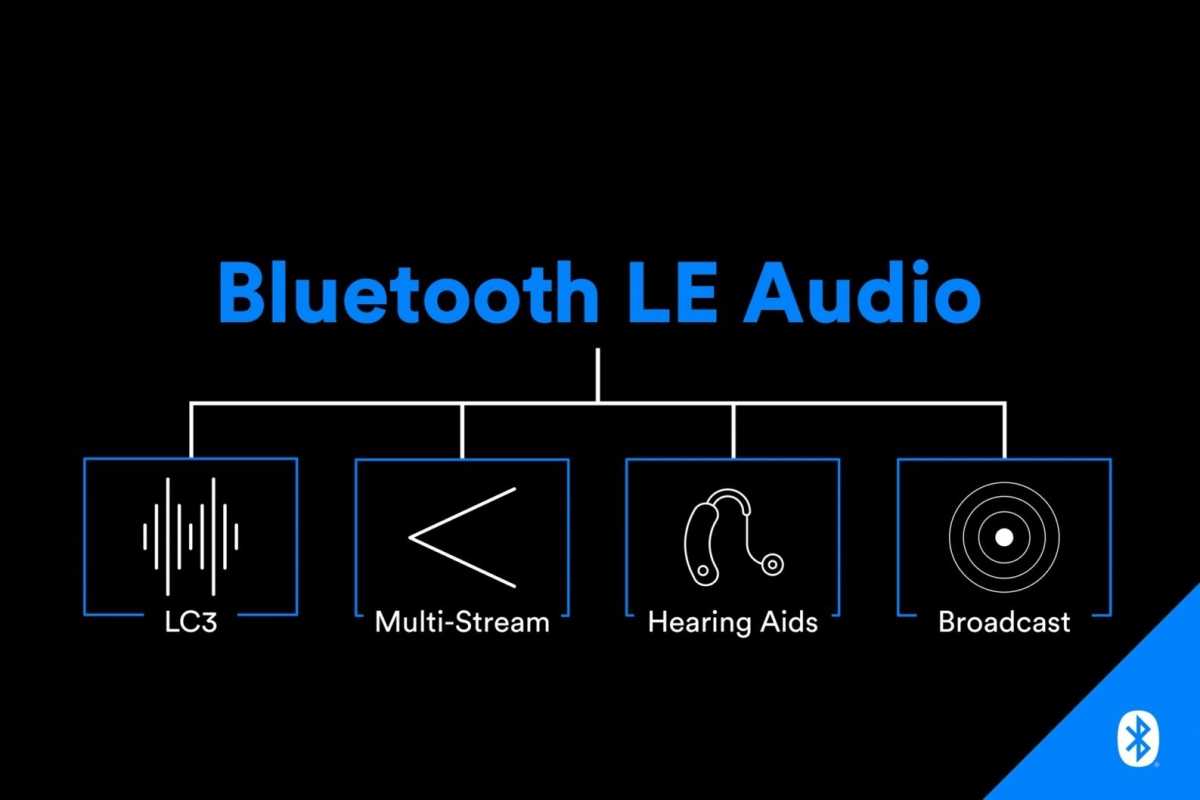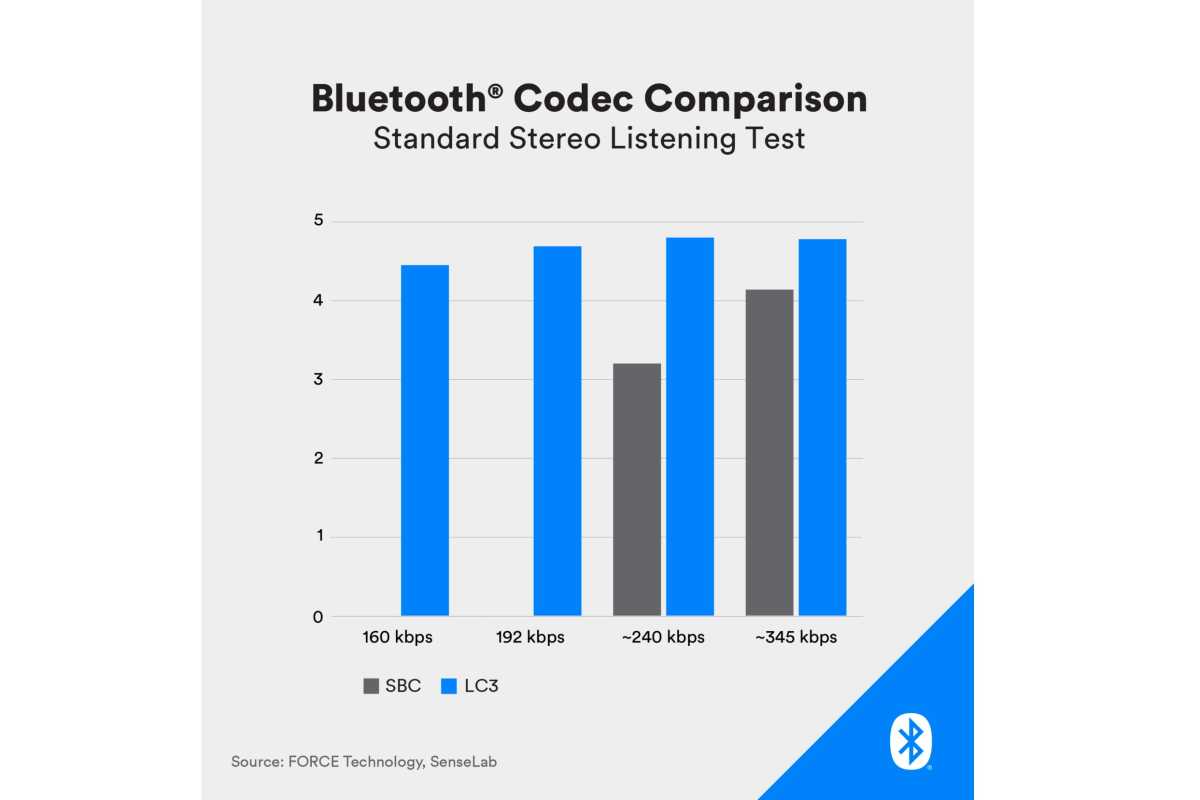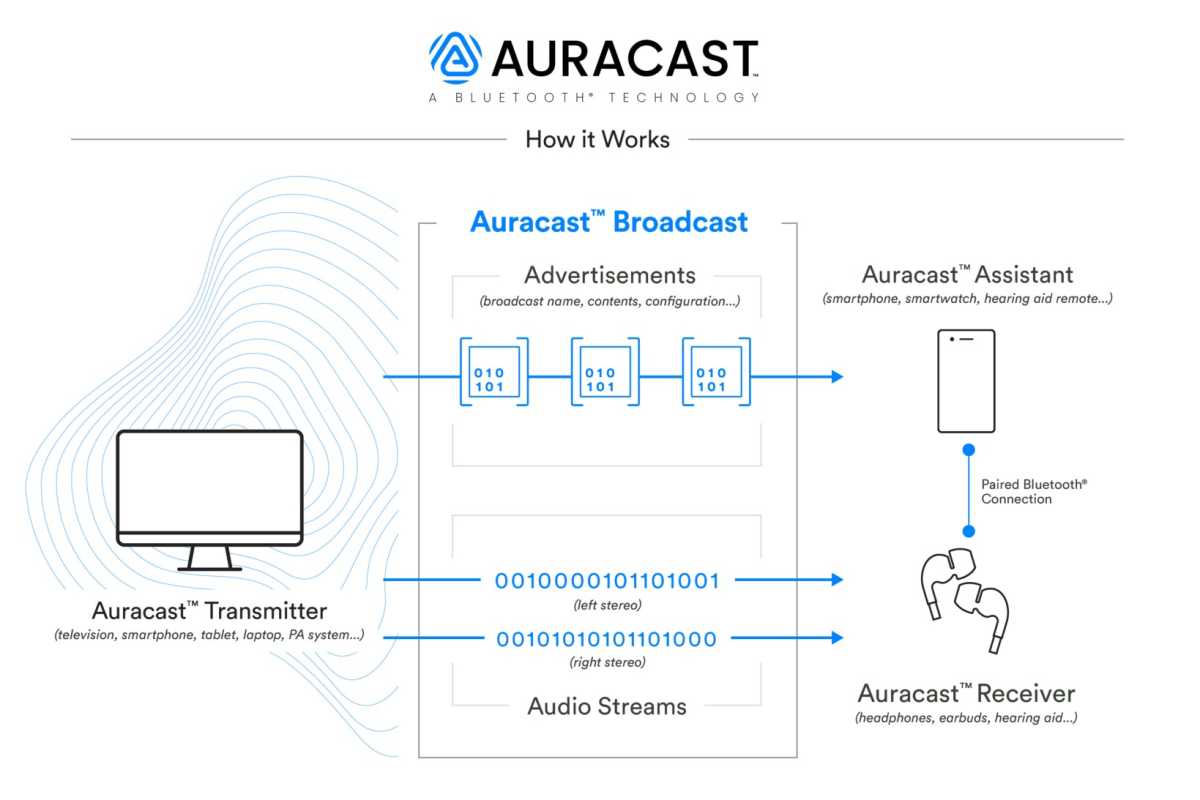Bluetooth LE (the LE stands for “low energy”) is the latest version of the wireless technology that’s connected our wireless speakers and headphones to phones, computers, and tablets for the past two decades. Low energy, in this context, refers to the lower amount of electrical power required to send data: Lower power consumption, of course, means longer battery life—and/or smaller batteries in devices. This is accomplished by having the Bluetooth radio remain in sleep mode unless a connection is established.
Bluetooth LE Audio promises to deliver higher-quality audio, thanks to its LC3 (Low Complexity Communication Codec) element (introduced with Bluetooth 5.2); plus, better handover between audio and voice connections, and more importantly in this discussion, simultaneous connections to multiple devices. It’s still a lossy codec, however, which audio purists won’t like.
This story is part of TechHive’s in-depth coverage of the best Bluetooth speakers and noise-cancelling headphones.
The LC3 codec will have a far greater impact for Android users—at least in the short term—as iOS devices use Apple’s proprietary AAC codec. LC3 is a royalty-free alternative (it’s included with the standard Bluetooth license) to Sony’s LDAC and Qualcomm’s aptX family of codecs, which are the current benchmarks for high-quality audio streaming; again, on Android devices.
How Bluetooth LE Audio and the LC3 codec improve streaming

Bluetooth LE Audio delivers four major benefits: A higher-quality audio codec, multi-streaming capabilities, improved features for hearing aids, and Auracast broadcasting.
Bluetooth SIG
Bluetooth LE Audio introduces a new flexibility into home speaker setups, allowing a user to stream music to multiple speakers in a house without wires or relying on proprietary technologies such as Sonos, Denon’s HEOS, or Bluesound’s BluOS.
Users can listen to music via Bluetooth LE Audio headphones and simultaneously get notifications from a smartwatch. A Bluetooth LE Audio speaker can play music from a smartphone and take calls as a hands-free speakerphone. While Apple AirPods Pro users already enjoy these capabilities, these updates will put Android users on equal footing and promote compatibility with a far greater range of devices.
But let’s be careful before we celebrate Bluetooth LE Audio’s higher-quality audio claims. The LC3 codec is a big step up from the SBC codec that’s been in use since 2003, but there’s no evidence that it will ever be on par with LDAC and aptX HD.
True hi-res wireless music streaming is coming, likely within the next decade—and that solution might even be a newer version of Bluetooth. LC3 represents a small step toward that era, and it will help finally push the ancient SBC codec onto the scrap heap.
Which devices support the LC3 codec now?

The new LC3 codec is a significant improvement over the older SBC codec, but that’s not saying a lot. Sony’s LDAC codec and Qualcomm’s aptX Adaptive and aptX HD codecs deliver much higher-quality audio.
Bluetooth SIG
As usual, LC3 codec support must be on both the source and the client device. So which ones do? Nothing from Apple, although that could change. Among Android smartphones, the list includes the Google Pixel 7/7a, Samsung Galaxy S23, Samsung Galaxy Z Fold 4, and Samsung Galaxy Z Flip 4. The list of headphones includes the Samsung Galaxy Buds 2 Pro, OnePlus Buds Pro 2, and Earfun Air Pro are among the headphones that use the codec. Speakers with LC3 support include the JBL Charge 5 and the Ultimate Ears Megablast. In some cases, support was added after the product shipped, so you’ll need to download a firmware update.
Users should expect their devices to simultaneously support both Bluetooth LE Audio and Bluetooth Classic as the industry transitions to the new standard. For the foreseeable future, new phones will continue to pair with old-style wireless speakers and headphones even as manufacturers hope that LE’s new features will be compelling enough to convince buyers to upgrade their gear.
Bluetooth LE Audio’s most transformative feature: Auracast

Auracast is the Bluetooth LE feature we’re most excited about.
Bluetooth SIG
Longer battery life and higher-quality audio are terrific, but I would argue that Auracast is Bluetooth LE Audio’s most important new feature. Auracast allows a source device to broadcast to an unlimited number of client devices simultaneously. Conceivably, several headphone users will be able to listen to the same music from a single phone.
The new technology will have its most immediate impact on a new generation of hearing aids. Users will be able to tune in directly to audio streams from public address systems, providing them with clearer listening experiences in classrooms, churches, and theaters. Auracast will also enable simultaneous streams in multiple languages, opening public events to more people by removing translation barriers.
Museums can use Auracast to deliver narration for guided tours, television viewers can ditch the bulky single-use headsets for late-night or assisted listening, and travelers will be able to connect directly to those airport television screens.
Should you care about Bluetooth LE Audio?
Bluetooth LE Audio and the LC3 codec represent a notable step forward for wireless streaming technology, but the emphasis here isn’t nearly as much on improving audio quality as it is on other features, interesting as they might be. The new protocols don’t get us any closer to hi-res audio streaming, and they’re not comparable to the proprietary LDAC and aptX HD codecs we already have.
Auracast, on the other hand, is exciting, especially for people who need hearing aids. And it comes just as the market is set to explode now that government deregulation will allow the devices to be sold without a prescription in the United States. You should also look for Bluetooth LE Audio headphones and earbuds to replace those museum tour headsets, allow diplomats to upgrade their translation equipment, and give movie audiences the chance to hear native-language dubbing during a screening.
Our lossless wireless streaming future has yet to arrive, but Bluetooth LE Audio’s improved connectivity means the standard still has a lot to offer while we wait.


